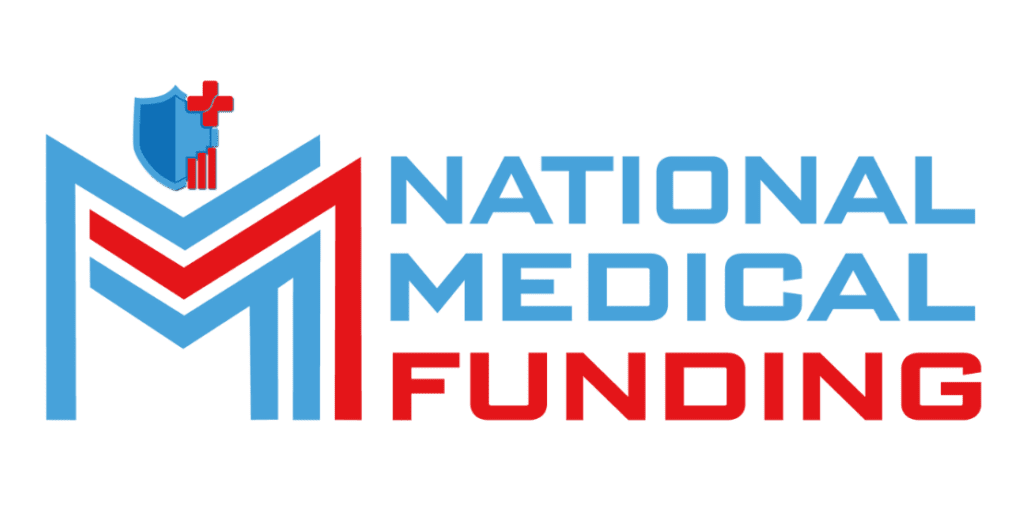
How to Use National Health Finance Programs t
Starting or expanding a medical practice in today’s h...

Saturday and Sunday – CLOSED
support@nationalmedicalfunding.com



The healthcare industry continues to evolve rapidly, and with it, the financing landscape is undergoing significant changes. For medical practices, hospitals, and healthcare providers, staying on top of the latest healthcare loan trends and healthcare finance solutions is critical to ensure sustainable growth and operational success in 2025.
In this comprehensive guide, we’ll explore the top healthcare financing trends to watch this year. From innovative funding models to government-backed programs and new lending platforms, understanding these trends will empower healthcare providers to access capital smarter and scale more efficiently. We’ll also highlight how partnering with specialized healthcare finance companies can unlock tailored financial strategies designed for the unique demands of medical businesses.
One of the most prominent trends is the increasing adoption of healthcare equipment financing. Medical technology is advancing at a rapid pace, and providers need to upgrade diagnostic tools, imaging devices, and electronic medical record (EMR) systems frequently to stay competitive and compliant.
Equipment financing allows practices to avoid large upfront costs by spreading payments over time. This preserves working capital and helps facilities maintain state-of-the-art care.
Specialized healthcare finance companies offer flexible loan products tailored for equipment purchases, understanding the typical depreciation schedules and regulatory considerations that general lenders may overlook.
For a deeper dive into this, see our blog on Start a Medical Practice in 2025 with National Medical Funding.
In 2025, more healthcare providers are leveraging national health finance programs offered by government and private entities. These programs provide funding support aimed at expanding facilities, improving patient care, and upgrading technology.
These funds often come with favorable terms such as lower interest rates or deferred payments, making them highly attractive for growth initiatives.
Understanding how to access these programs is key. Many practices benefit from guidance by healthcare finance specialists who navigate the application and compliance process.
Learn how to use these programs effectively in our blog, How to Use National Health Finance Programs to Expand Your Practice.
Digital transformation in lending is reshaping how medical providers secure funding. Online platforms streamline application processes, reduce paperwork, and speed up approvals.
These platforms specialize in healthcare loan products, enabling providers to access capital quickly without sacrificing due diligence. They also offer more transparent terms and personalized loan options.
Digital lending reduces reliance on traditional banks and opens doors for smaller practices that may have been overlooked before.
Explore further on digital finance strategies in Your Easy Guide to Healthcare Lending: How Medical Practices Can Get the Money They Need in 2025.
More healthcare providers are adopting innovative funding strategies beyond conventional loans. This includes revenue-based financing, lease-to-own equipment programs, and even partnerships with investors focused on medical innovations.
These creative options offer greater flexibility and align repayment with actual cash flow, which is crucial for fluctuating revenue cycles in healthcare.
Working with experienced healthcare finance companies helps providers explore such non-traditional methods safely.
For inspiration, check out Beyond the Loan: Creative Financing Strategies Fueling Medical Innovations in 2025.

Healthcare providers are increasingly aware that securing financing is only part of the solution. Managing revenue cycles efficiently and maintaining steady cash flow is equally important.
Lenders today often evaluate a practice’s revenue cycle management (RCM) before approving loans, and some offer financing tied to improving RCM metrics.
Practices that optimize billing, collections, and claim management can secure better loan terms and grow sustainably.
Hospitals facing denied claims can turn those challenges into cash flow opportunities — explore this approach in How Hospitals Can Turn Denied Claims into Cash Flow Opportunities in 2025.
With healthcare regulations evolving constantly, lenders and borrowers must ensure financing arrangements meet compliance standards.
Healthcare finance solutions today increasingly include advisory services that help practices stay aligned with government mandates such as HIPAA and the Affordable Care Act (ACA).
This trend ensures that providers don’t just get funds, but get the right funds for compliant growth.
Medical providers prefer lenders who understand the seasonality and unpredictability of healthcare revenues. Hence, flexible repayment terms, including deferred payments, interest-only periods, or seasonal payment structures, are becoming standard.
Lenders who specialize as healthcare finance companies are better equipped to offer these tailored terms, helping providers manage cash flow without sacrificing service quality.
The telehealth boom accelerated by the pandemic continues to reshape healthcare delivery. Providers are investing in telehealth platforms, remote patient monitoring devices, and cybersecurity infrastructure.
Financing this new category requires lenders knowledgeable in both healthcare and technology sectors.
Healthcare providers can tap specialized loans or grants to fund telehealth growth, integrating these needs into broader financing strategies.
Environmental sustainability is gaining traction in healthcare infrastructure investments. Practices and hospitals are exploring “green loans” and financing programs dedicated to energy-efficient equipment, eco-friendly building materials, and waste reduction systems.
These programs often come with tax incentives or lower rates, providing financial and environmental benefits.
Artificial Intelligence (AI) and data analytics tools help healthcare providers forecast financial needs, manage risk, and optimize loan portfolios.
Finance companies offering these technologies add significant value by providing predictive insights that help medical businesses stay ahead financially.
2025 presents a dynamic landscape for healthcare financing, with diverse trends reshaping how providers access and manage capital. From innovative healthcare loans and digital lending to national health finance programs and creative funding models, staying informed is critical.
Partnering with specialized healthcare finance companies like National Medical Funding ensures that medical providers receive customized financial solutions that drive growth while managing risk.
Ready to secure smart financing tailored for healthcare providers? Contact National Medical Funding today and let us help you unlock your practice’s potential.
Q1: What types of loans do healthcare finance companies offer?
A: They offer equipment loans, working capital loans, lines of credit, and specialized programs for supplies and expansion.
Q2: How can I access government-backed national health finance programs?
A: Partnering with knowledgeable lenders or consultants helps navigate eligibility and application processes efficiently.
Q3: Why choose healthcare-specific finance companies over traditional lenders?
A: Specialized lenders understand healthcare’s unique financial cycles and compliance needs, offering more flexible and aligned products.
Starting or expanding a medical practice in today’s h...
In 2025, staying ahead in the healthcare industry means...

Fuel your medical practice’s growth with financial solutions tailored to your needs. We’re here to support independent practitioners and group practices with strategies built for success.
Mon Fri: 8:00am – 6:00pm
Saturday: Closed
Sunday: Closed
Copyright © 2025 National Medical Funding